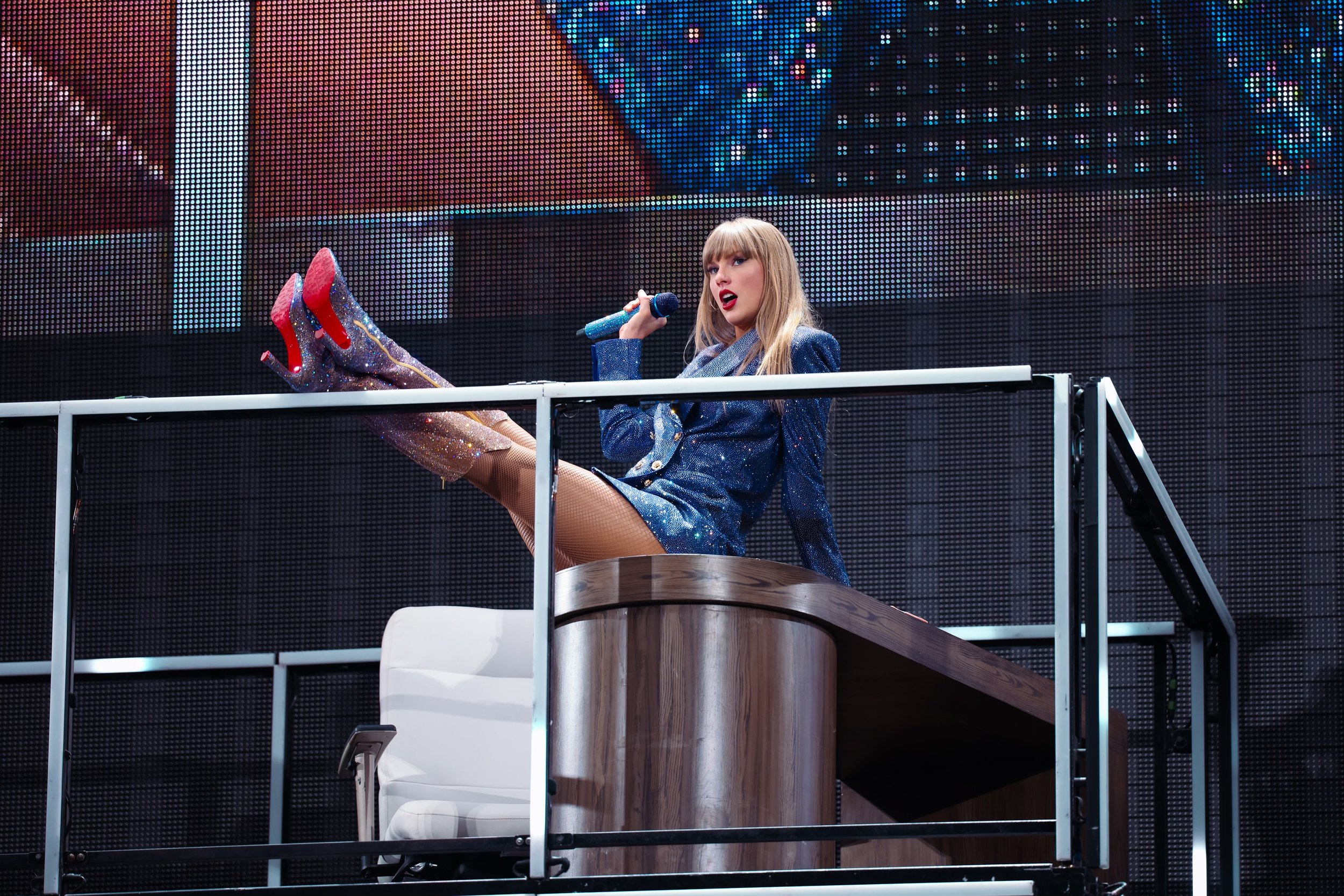How Taylor Swift’s Eras Tour Reshaped Music History
As Taylor Swift closed the final chapter of her Eras Tour in December 2024, the music world stood in awe. With over $2 billion in ticket sales, the tour shattered industry records, becoming the highest-grossing tour in history. But beyond the staggering numbers, the cultural and historical significance of Swift’s achievement positions her not only as a leading figure in contemporary music but as a symbol of the evolution of the live music experience.
Taylor Swift in Madrid. June 2024. Photo TAS Rights Management.
To fully grasp the magnitude of the Eras Tour, it’s essential to compare it to other landmark tours. U2’s 360° Tour (2009-2011) previously held the title for the highest-grossing tour, earning $736 million across 110 shows. The Rolling Stones, known for their unparalleled longevity, amassed $558 million with their A Bigger Bang Tour (2005-2007). Meanwhile, Elton John’s Farewell Yellow Brick Road Tour (2018-2023) was widely celebrated for its longevity and emotional resonance, ultimately reaching $939 million.
Swift’s tour, however, eclipsed these milestones by a wide margin. With over 140 shows spanning five continents, the Eras Tour was more than just a series of concerts; it was a global phenomenon. Its record-breaking ticket sales underscore not only the scale of Swift’s audience but also the economic power of her fanbase, which enthusiastically fueled merchandise sales, hotel bookings, and even local economies around concert venues.
Why These Numbers Matter?
For the Music Industry, the financial success of the Eras Tour signals a resurgence in the live music sector following the devastating impact of the COVID-19 pandemic. Live Nation, the promoter behind the tour, saw its stock surge, highlighting how one artist’s tour can buoy an entire segment of the industry. Moreover, Swift’s meticulous attention to creating a seamless, high-production experience set a new standard for what audiences expect, pushing artists to innovate further.
For the Public, Swift’s Eras Tour wasn’t just about the music; it was an immersive journey through the chapters of her career. By performing songs from each of her ten studio albums, Swift invited fans to relive their personal histories alongside her artistic evolution. This nostalgic and deeply emotional connection cultivated an unparalleled sense of community among attendees, many of whom traveled across countries to see her perform.
For Pop Music History, the Eras Tour cements Swift’s status as a cultural icon whose influence rivals that of Michael Jackson, Madonna, and Beyoncé. Each of these artists redefined the live music experience in their eras—Jackson with his groundbreaking choreography and production, Madonna with her theatrical storytelling, and Beyoncé with her feminist narratives and cinematic approach to live performance. Swift’s contribution lies in her ability to merge storytelling, nostalgia, and fan engagement, creating an experience that transcends the traditional boundaries of a concert.
Taylor Swift in Madrid. June 2024. Photo TAS Rights Management.
Cultural Implications
Swift’s achievement extends beyond music into the broader cultural fabric. Her success reflects the growing power of female artists in a traditionally male-dominated industry. By managing her career with precision—including re-recording her albums to reclaim ownership of her masters—Swift has inspired countless young artists to prioritize creative and financial autonomy.
Furthermore, the Eras Tour demonstrates how the line between music and other media is increasingly blurred. From the accompanying concert film to the massive social media presence documenting every show, Swift leveraged a multi-platform strategy to make her tour not just an event but a cultural touchstone.
The Road Ahead
The end of the Eras Tour marks the conclusion of a historic chapter for both Taylor Swift and the music industry. Yet, its impact will be felt for years to come. As Swift moves into her next creative phase, the benchmarks she has set will challenge her contemporaries and successors to reimagine what’s possible in live music.


